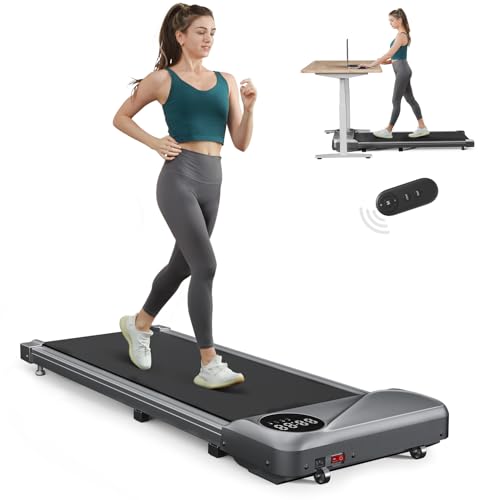What Experts In The Field Would Like You To Know
Treadmills: A Comprehensive Guide to Understanding Their Functionality, Benefits, and Appropriate Selection
Introduction
Treadmills have ended up being a staple in modern physical fitness routines, both in homes and gyms worldwide. They provide a hassle-free and effective way to maintain cardiovascular health, increase endurance, and help in weight management. This post checks out the different kinds of treadmills, their advantages, functions to consider when acquiring, and some FAQs to direct users in making notified decisions.
Kinds of Treadmills
When it comes to picking a treadmill, it is important to comprehend the various types available in the market. Here are the main categories:
1. Manual Treadmills
- Mechanism: These treadmills have an easy style and depend on the user's efforts to move the belt.
- Pros: More economical, quieter operation, no electrical energy required.
- Cons: Limited functions, may not provide the very same variety of exercise intensity.
2. Motorized Treadmills
- Mechanism: Powered by a motor that drives the belt, permitting users to stroll or run at a set pace.
- Pros: Greater variety of speeds and inclines, equipped with various functions such as heart rate screens and exercise programs.
- Cons: More costly and may need more upkeep.
3. Folding Treadmills
- Mechanism: Designed for those with restricted area, these treadmills can be folded for easy storage.
- Pros: Space-saving, often motorized, versatile features.
- Cons: May be less long lasting than non-folding designs.
4. Business Treadmills
- Mechanism: High-quality machines developed for usage in gyms and gym.
- Pros: Built to stand up to heavy usage, advanced features, typically include warranties.
- Cons: Pricey and not ideal for home use due to size.
5. Curved Treadmills
- Mechanism: A distinct design that allows users to move the belt utilizing their own energy.
- Pros: Offers a more natural running experience, promotes better running kind.
- Cons: More pricey and can be noisier.
Treadmill Type
Pros
Cons
Handbook
Economical, no electricity needed
Minimal features
Motorized
Variety of speeds, advanced functions
Upkeep needed
Folding
Space-saving, often motorized
May do not have toughness
Business
Developed to last, professional-grade functions
Costly
Curved
Natural running experience, promotes excellent form
Greater price
Benefits of Using Treadmills
Treadmills offer numerous advantages that can contribute to one's general fitness and health objectives. Some of these benefits include:
- Convenient Workouts: Treadmills permit users to exercise inside your home despite weather conditions.
- Cardiovascular Health: Regular use can enhance heart health by increasing endurance and promoting healthy blood circulation.
- Weight Management: Effective for burning calories, which aids in weight loss and management.
- Personalized Workouts: Users can control speed, slope, and duration to create customized exercise experiences.
- Security: Treadmills provide a predictable surface area, reducing the threat of falls compared to outdoor running.
- Multifunctional: Many treadmills come with functions like heart rate monitors, workout programs, and even home entertainment systems.
Choosing the Right Treadmill
When selecting a treadmill, potential purchasers should consider a number of key factors:
Features to Consider:
- Motor Power: Typically measured in horse power (HP), a motor strength of a minimum of 2.5 HP is advised for severe runners.
- Belt Size: A longer and wider belt accommodates different stride lengths, offering comfort during workouts.
- Slope Settings: Adjustable incline features replicate outside hill running and can increase exercise strength.
- Weight Capacity: Ensure the treadmill can support the user's weight for security and longevity.
- Console Features: Look for user-friendly dashboards, exercise programs, and Bluetooth compatibility for streaming music or other functions.
Spending plan Considerations
- Under ₤ 500: Entry-level manual treadmills suitable for casual walkers.
- ₤ 500 – ₤ 1,500: Mid-range motorized treadmills that offer more functions and much better toughness.
- ₤ 1,500 – ₤ 3,000: High-end models with sophisticated innovation, bigger motors, and longer warranties.
- Over ₤ 3,000: Commercial-grade treadmills perfect for frequent use in health clubs or training facilities.
Frequently Asked Questions (FAQs)
1. How frequently should I utilize a treadmill?
It is suggested to utilize a treadmill at least three to 5 times a week, integrating various strength levels for best results.
2. Can I lose weight by using a treadmill?
Yes, constant use of a treadmill can add to weight loss, particularly when integrated with a balanced diet plan and strength training.
3. What is the very best speed to stroll on a treadmill for newbies?
A speed of 3 to 4 miles per hour is an ideal variety for newbies. It's necessary to begin sluggish and gradually increase speed as convenience and endurance enhance.
4. Do I require to utilize a treadmill if I already run outdoors?
Using a treadmill can supply extra benefits, such as controlled environments and differed workouts (slope, intervals) that are not constantly possible outdoors.
5. How do look at this site preserve my treadmill?
Routine upkeep consists of lubricating the belt, cleaning the deck and console, and inspecting the motor for optimal performance.
Treadmills are necessary tools for those seeking to improve their fitness levels in a regulated and convenient way. With various types available, comprehending their features and benefits is crucial for making a notified purchase. By thinking about personal workout requirements, area accessibility, and budget constraints, people can find the most ideal treadmill that fits their lifestyle. Incorporating treadmill workouts into a well balanced physical fitness routine can cause improved health results and an enjoyable workout experience.
